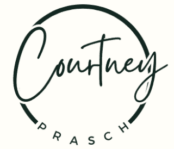When I first started strength training, I thought I was doing everything “right.” I stuck to light dumbbells, high reps, and didn’t push it too hard. After all, I didn’t want to “bulk up” or hurt myself—and I certainly wasn’t trying to win any powerlifting meets. I eventually figured out after not seeing any changes that I was approaching strength training in my 40s wrong.
I could have saved so much time if I had done a little more research and invested in a good coach or personal trainer. But sometimes that is the best way to learn, by trial and error. It’s all about the journey and I have realized that life is too short to beat yourself up.
So, here’s the truth: if you’re a woman in your 40s or 50s, strength training is one of the best things you can do for your body—and your future self will thank you for starting today. Even if you have never strength trained before.

I wanted to share with you the three biggest things I wish I had known from the start to save you time and hopefully encourage you to get started.
1. Lifting Heavy Isn’t Dangerous—It’s Necessary
I used to believe that lifting light weights for lots of reps was the safest and most effective way to build muscle. But that didn’t help me build the kind of lean muscle I needed to support my metabolism, protect my bones, and feel strong in everyday life.
What actually works? Progressive overload—gradually increasing the amount of resistance your muscles are working against.
Heavier weights (with good form) are not dangerous. In fact, they stimulate bone growth, help preserve muscle during menopause, and reduce injury risk over time. The key is to challenge your body just enough—not with max effort every time, but with intentional progression.
If it feels easy, you’re not building strength—you’re just moving.
2. Muscle Is Harder to Build After 40—But Not Impossible
Once we hit our 40s and especially during menopause, we start losing muscle at a faster rate (a process called sarcopenia). Combine that with hormonal changes and increased inflammation, and it’s easy to feel like you’re spinning your wheels.
But you can build muscle—you just need to be more strategic. That means:
- Prioritizing strength training 2–4 times per week. I like full body exercises and programs. Exercises like squats, deadlifts, shoulder presses, chest presses, and rows are great exercises that hit multiple muscle groups.
- Eating adequate protein (at least 25–30g per meal). This was a huge game changer for me. I definitely was not eating enough protein. Once I stated to eat about 1 gram of protein per pound of ideal body weight per day, my strength increased and muscle mass improved. I also lost body fat along the way without cutting back on my calories.
- Sleeping well, managing stress, and recovering fully. I am still working on this one! You don’t need to train hard every day. I tend to do something hard Monday through Friday and then on the weekends rest or do fun low stress activities like biking, hiking or walking.
3. You Don’t Need a Gym to Get Results
I work out at home. For several reasons: I don’t have to waste time in the car traveling to and from the gym, I don’t have to worry about sharing equipment or waiting to use something. For me having a home gym set up is all about convivence. If you think you need a gym membership or a room full of equipment to get strong—think again. I’ve built strength with adjustable dumbbells, resistance bands, a barbell, and a pull up bar.
Some of my favorite workouts include:
- Barbell squats and deadlifts
- Dumbbell step-ups, rows and presses
- Bodyweight pushups, lunges, and pull-ups
- Weighted vest or rucking outdoors
It’s about consistency, not perfection. Two well-executed full body strength sessions a week can be life changing.
If you’re not sure where to start, check out my coaching options or download my free guide to building strength in menopause.
Final Thoughts
If you’re in your 40s or 50s and thinking about getting started with strength training, don’t wait. You don’t need to be perfect or know everything to begin. Just take that first step—and trust that your future self will be so glad you did. If you are clueless or need some help getting started, then your best bet is to invest in a good personal trainer or coach. They will assess your movement patterns and lifestyle and develop a customized program that meets your goals and fits into your life.
Need help creating a strength program that works for your body, your goals, and your lifestyle?
Book a free discovery call here — I’d love to support you.


